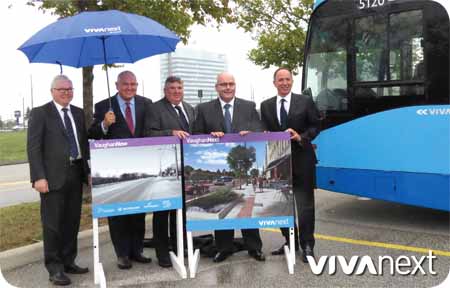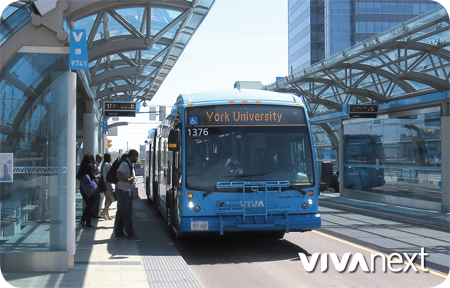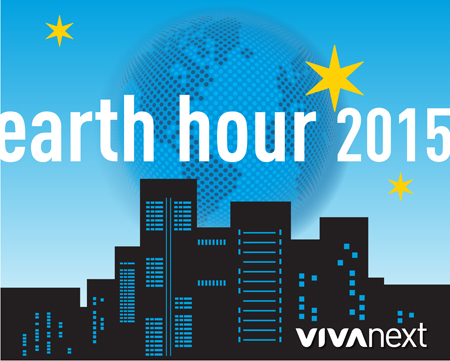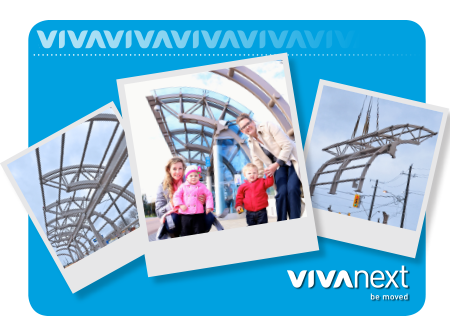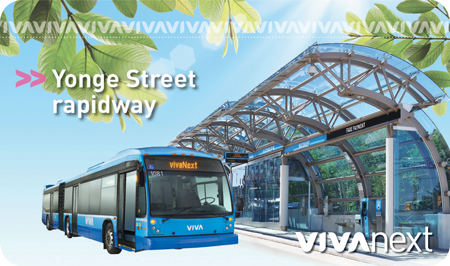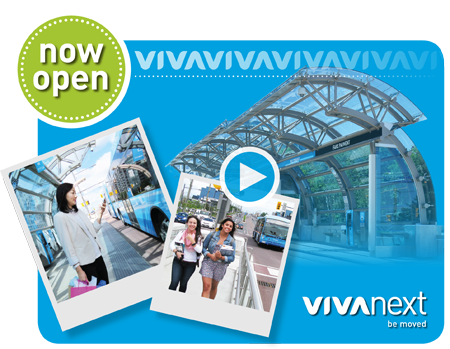
This morning, The Honourable Steven Del Duca, Ontario Minister of Transportation, announced the opening of the section of rapidway from Highway 404 to South Town Centre on Highway 7 East. He was joined by: The Honourable Michael Chan, MPP, Markham; Bill Fisch, Chairman and CEO, The Regional Municipality of York; Bruce McCuaig, President and CEO of Metrolinx; Frank Scarpitti, Mayor of the City of Markham.
Travelling along Highway 7, it’s hard to miss the beautiful and functional vivastations in the centre median. These stations are making a huge contribution to the transformation of our community in Richmond Hill and Markham, so let us take you on the same guided tour as our dignitaries took this morning for an inside look at the benefits and attributes of these stations.
The first thing you’ll notice as you cross to a station is how big and airy the canopy is at 28m [92’] long and 5m [16’] high. The curved glass above the platform provides both weather protection and a sense of space at the same time and satisfies long-term needs as platforms accommodate two Viva vehicles at once and in future will be able to accommodate Light Rail Transit [LRT]. The platform is approached by a gently sloped ramp with handrails on both sides, making it fully accessible to all, whether they’re walking, pushing a stroller, or in a wheelchair or scooter. Passing by the familiar Viva fin and planter boxes with greenery, you’ll next come to an illuminated wall map of the YRT\Viva system.
Next on the tour is a bank of fare equipment, including a Ticket Vending Machine [TVM], a Ticket Validator [TV], and two PRESTO machines. Once you’ve paid your fare, you’ll move to the Fare Paid Zone [FPZ], which is clearly shown by being paved with a different coloured tile on the ground, as well as by a curved sign above. This area needs to show as distinct, because YRT fare rules require passengers to have paid their fare before moving into the FPZ.
Once you’ve paid your fare, you’re free to make yourself comfortable on the platform until the next bus arrives. We’re making it easy for you to know how long you’ve got to wait, with a large Variable Message Sign [VMS] projected from the canopy. The VMS scrolls through the upcoming Viva arrivals, telling you exactly when the next bus will arrive. Because the VMS system is connected to the GPS technology in our Viva vehicles as well as to the central transit scheduling software, it’s constantly updated to provide accurate and real-time information.
If you decide to sit on a bench or get comfy out of the elements, the shelters have been designed with passenger comfort as a priority. The heated glass enclosure is well lit, and accessed by two push-button automatic doors. The heaters – which will be appreciated later this year – automatically turn on if someone enters the enclosure, and if the temperature in the enclosure feels lower than 10 degrees Celsius. Recycling and garbage disposal units on the platforms make it easy to keep these lovely stations clean.
The entire platform will be well lit, with lighting inside the canopy as well as on the platform. And to enhance your feelings of comfort and security, the back of the platform is protected from Highway 7 traffic by a barrier wall topped with a guardrail, and there are multiple security features including cameras and an emergency call button.
Last but not least, to help you stay oriented, wayfinding signage will show you where the buses will stop, and other features including the way to the crosswalk.
It’s hard to do the stations, and the rapidway justice with written descriptions, so here’s a video showing you some of the action involved in completing this section of the rapidway. One of the regular passengers tweeted that “it has cut my travel time in half, way to go!”



